We may earn revenue from the products available on this page and participate in affiliate programs. Learn More ›
HAVE YOU HEARD the rumor that I set a shooting world record? It started last year and the rumor—unbelievable as it must seem—is true. In March 2012, I did indeed break a previous record that had stood for nearly 20 years. The record I set is in benchrest competition, and the bench-rest game, as Outdoor Life readers know, is the quest for the ultimate in rifle accuracy. The Holy Grail of Benchrest, as you would imagine, is to shoot every bullet through the exact same hole, but the closest anyone has come was back in 1973, when a single five-shot group fired at 100 yards measured an astonishing .009 inches. (That amounts to about the thickness of five pages of an Outdoor Life magazine.) No one since has even come close to that record, but thousands of riflemen keep trying, even though it’s as unlikely as running a one-minute mile or skipping up Everest in ballet slippers. It probably ain’t gonna happen, but it’s in the genetic makeup of hardcore bench shooters to chase impossible dreams.
The Shamrock Shoot
A tournament is held at Twin Oaks range near the town of Dublin, Georgia, on the weekend following St. Patrick’s Day, so what else could it have been named but the Shamrock? Sponsored by the Middle Georgia Gun Owners Association, it’s one of the more popular events on the Benchrest calendar because it is unfailingly well run.
Though I’d always had fun at the Shamrock, it had never been a successful tournament for me because things always had a way of going wrong. On one trip, my RV broke down en route. Another time a pair of new rifles developed extraction problems. The same bad luck seemed in store for this trip as well, when the refrigerator in my spanking-new RV went out, turning a four-day supply of frozen meals to mush.
Building My Ammo
By getting to Twin Oaks Range a couple of days before the main event, I figured I had plenty of time to check out my shooting battery of two Light Varmint rifles plus a pair of Heavy Varmints to see which combinations of loads and bullets worked best. (These are two of the several classes of benchrest rifles.) Each of the rifles was chambered for the 6mm PPC cartridge. Though ready-to-load PPC cases are now available, I still prefer to make my cases the way the cartridge developers did. This is a rather complicated process that involves rebuilding an otherwise obscure cartridge called the .220 Russian. The neck diameter is enlarged from .22 to 6mm (.243 caliber), after which the wall of the neck is turned down to a uniform thickness. After further refinements, such as making flash-hole diameters uniform, the case is loaded and fired in a PPC rifle. This step, known as fire-forming, expands the case to its final dimension.
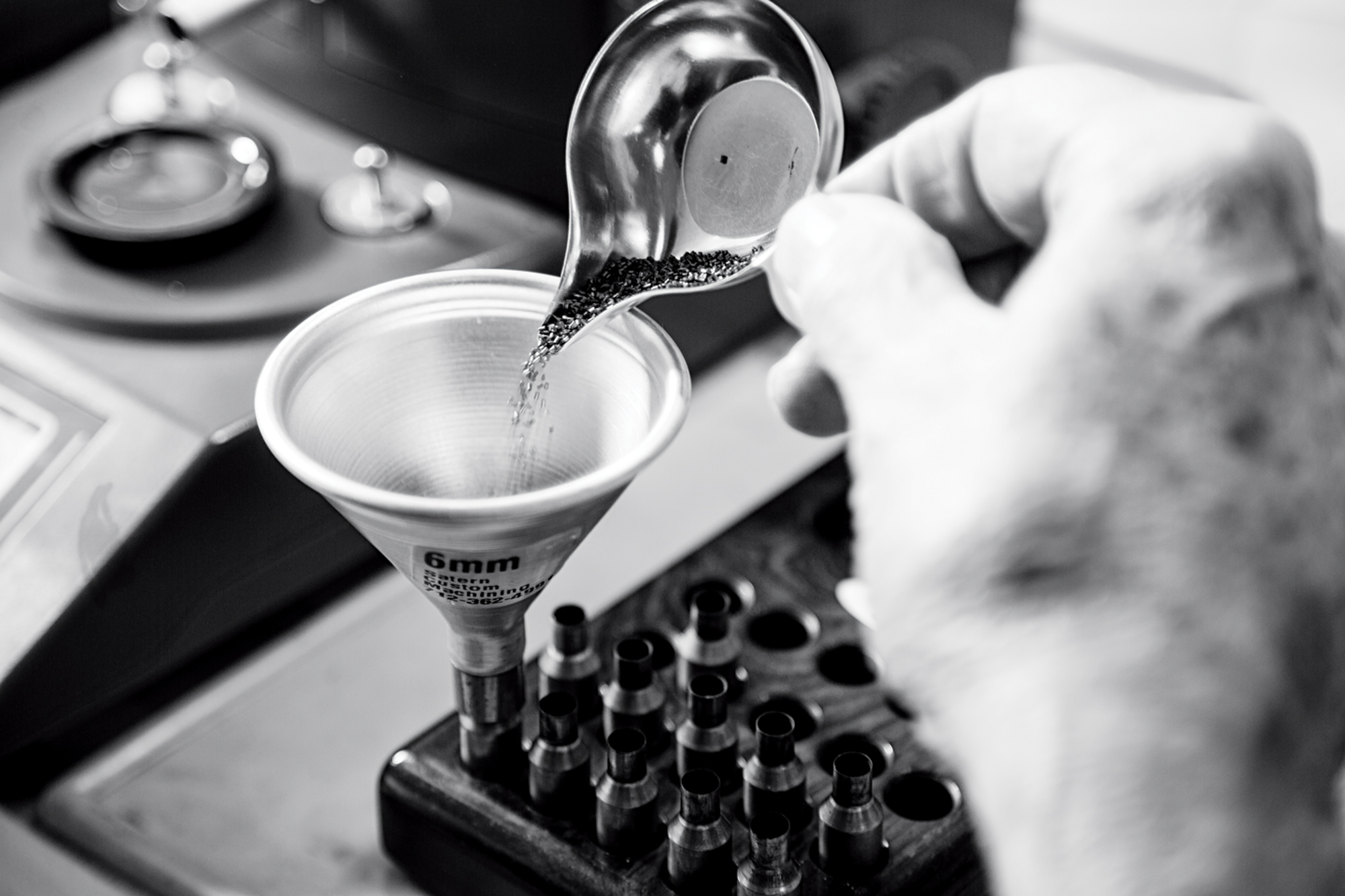
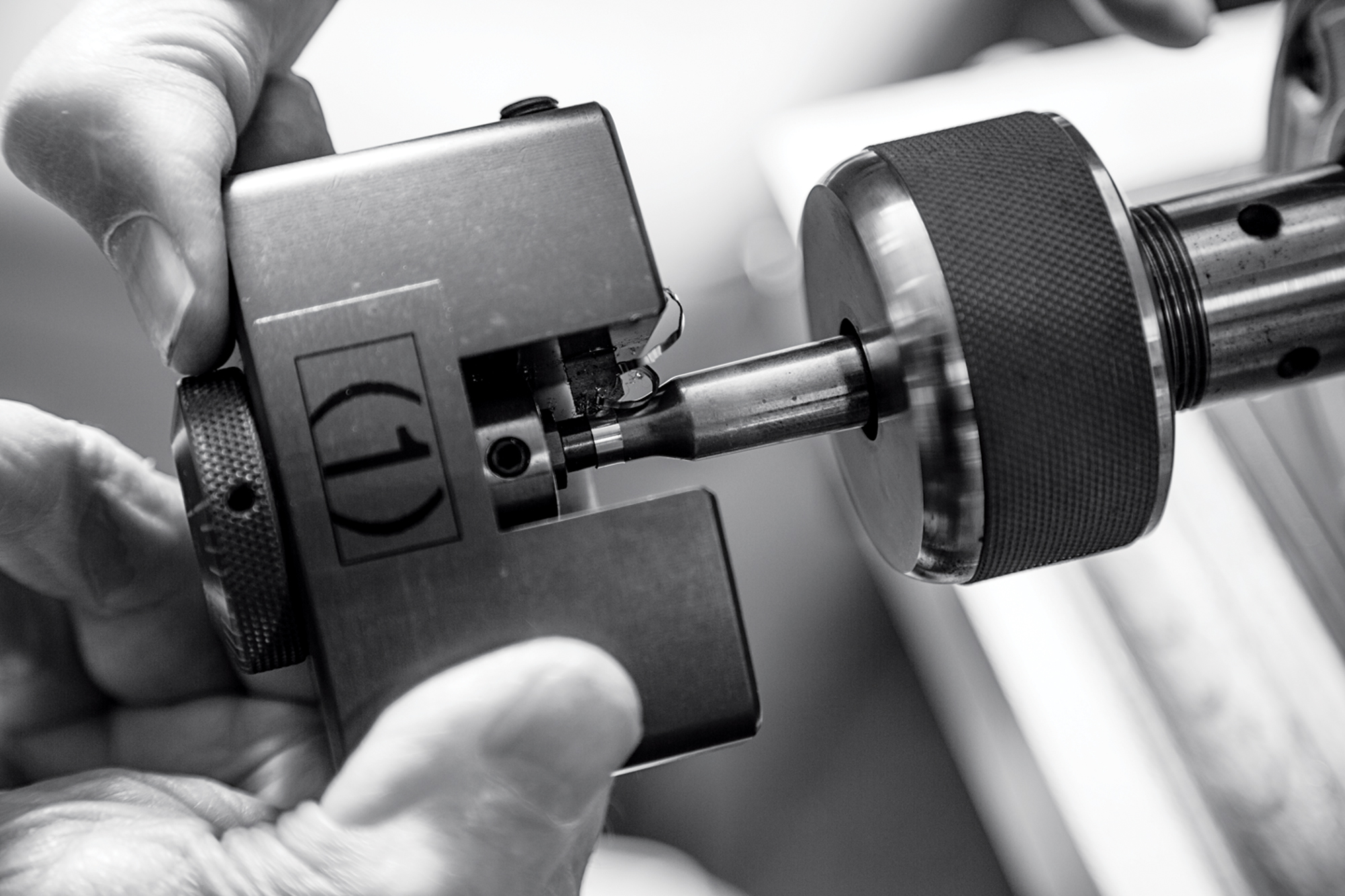
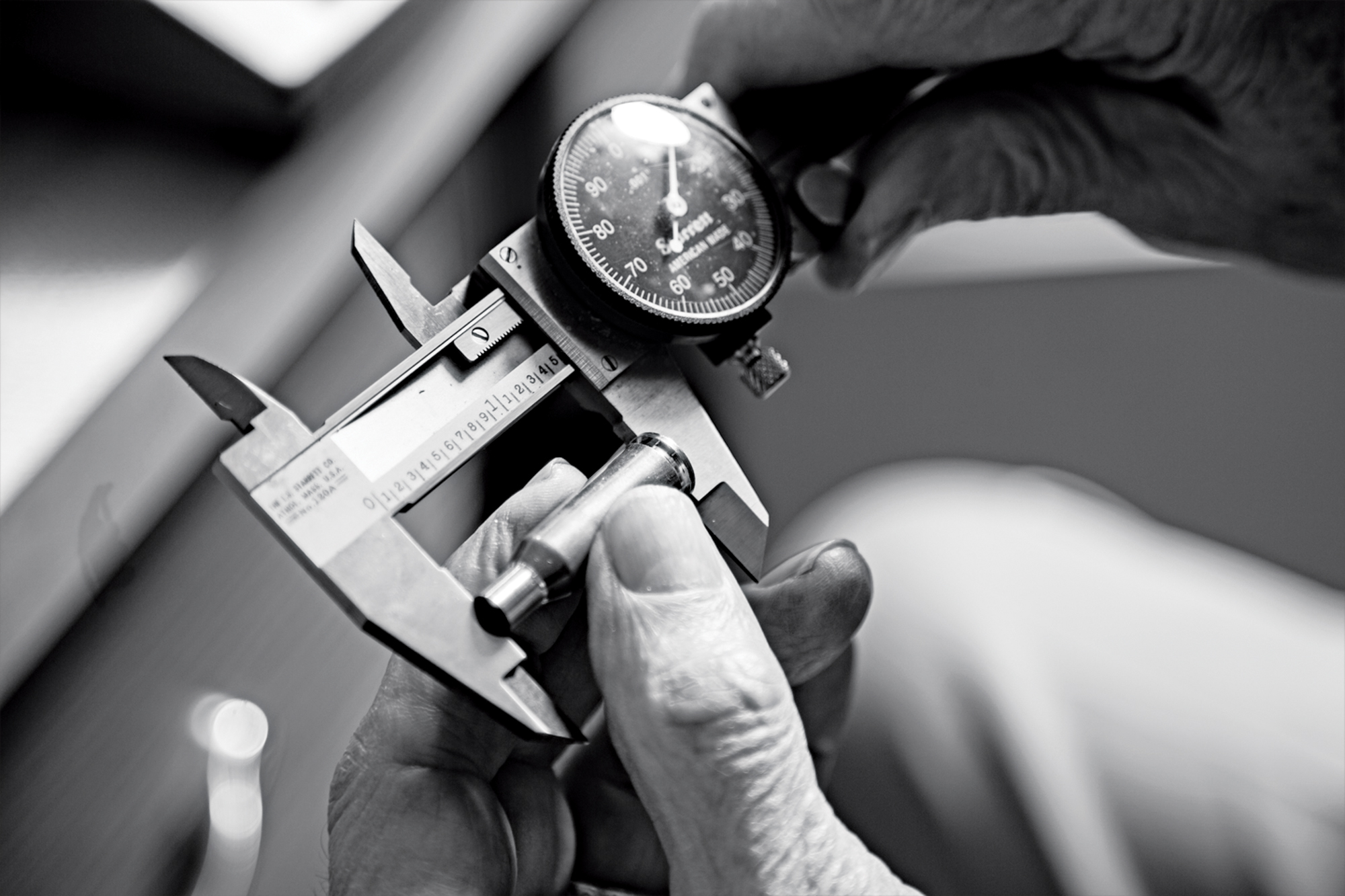
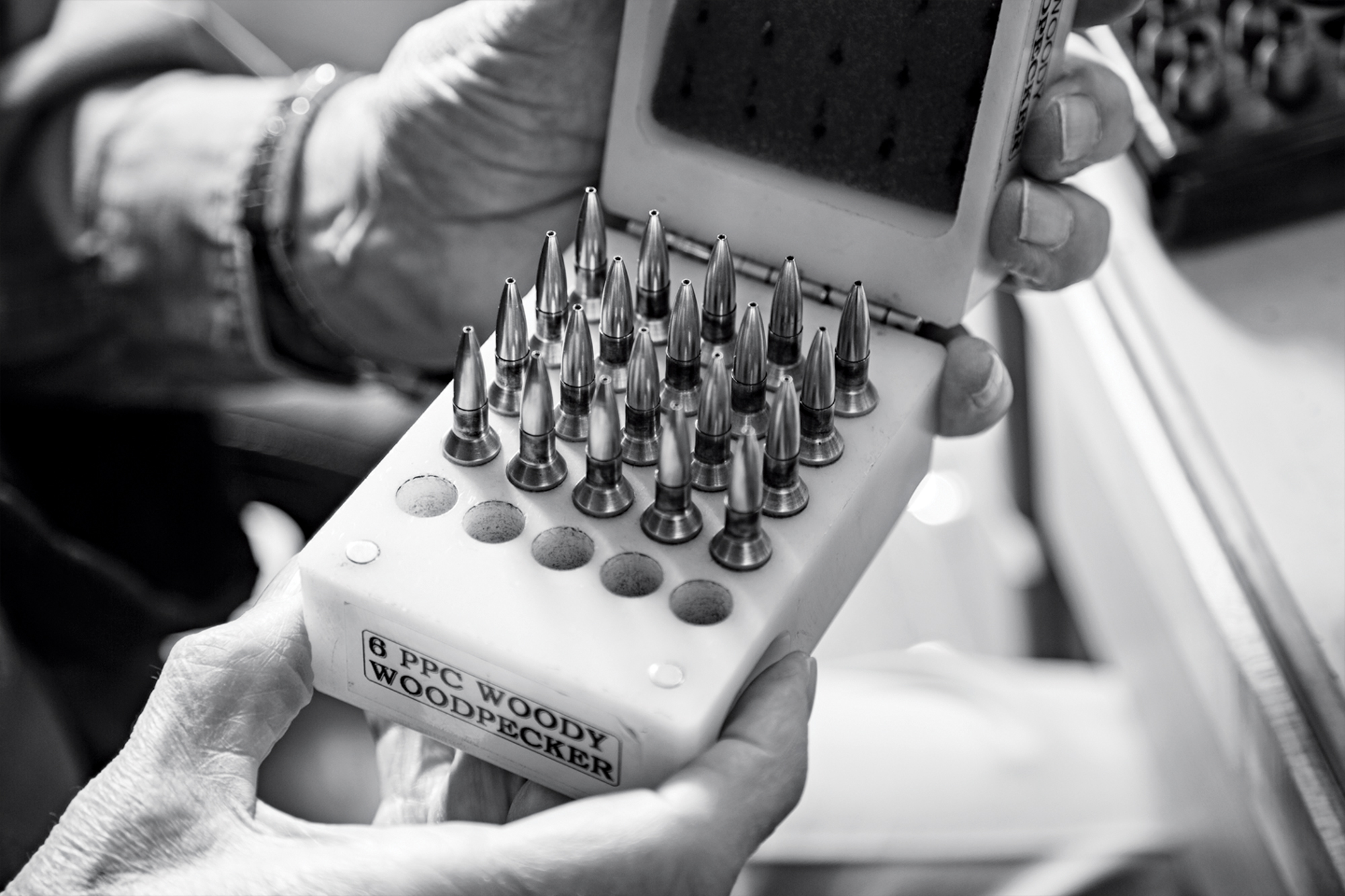
I already had cases prepped and fire-formed for each of the rifles and anticipated a rather leisurely couple of days tweaking my loads, but by the end of the first practice day, such bright hopes dimmed. No matter how I tinkered with the propellants and charge weights, bullet seating depth, and even the neck tension of my cases, nothing clicked. One of my Light rifles, a cute but capricious thing that I’ve since named Trixie, stubbornly refused to cooperate, while my fallback Light rifle, a beautiful but rather aged lady that had served faithfully in years past, exhibited signs that she was past her prime. Clearly, the only way to give her new life would mean fitting a new barrel. Happily, I’d had the foresight to bring fresh barrels and the tools to do a barrel swap, but you can’t simply screw in a new barrel and pick up where you left off. Fresh brass cases need to be prepped and fire-formed to fit the new barrel’s chamber, after which begins the mysterious and time-consuming process of discovering which combinations of bullets and powder will yield the best accuracy. So by the time the second practice day came to an end, I’d barely managed to prep and fire-form a dozen new cases. A single test run with VV 133 powder and Hottenstein 68-grain bullets looked promising, but I would be shooting an essentially untried rifle. That’s no way to begin a major tournament.
Bad Bench
Clearly my usual Shamrock bad luck was holding, and to make matters more ominous, the bench I drew was one of worst on the range, as it was subject to constantly changing and viciously unreadable currents of swirling air. (Shooters have been known to go home after drawing a bum bench because a hellhole position can make winning virtually impossible.) Combined with the uncertainty of the new barrel, it seemed the fates were allied against me that March morning. The one bright spot in my otherwise dismal prospects was that I would be sharing the bench with Harley Baker and Jeff Stover. Harley and Jeff are savvy shooters who have made a science of positioning wind flags so that they provide vital information about the constantly changing direction and strength of air currents. Their neatly set flags and spinning windmills gave me a glimmer of hope.
Strong Start
As I started shooting, no one was paying the least attention to my progress because my first groups, while good, hadn’t been all that spectacular. The first one, in fact, measured .115 inch, which was small enough to put me in second place but was in no way a harbinger of better things to come. My second group came in at .139 inch–again, pretty good, but nothing to get excited about, even though the scoreboard now moved me into first. It was the highest ranking I’d ever earned at the Shamrock, and I was feeling pretty confident, though certain that the ranking would be temporary, as they tend to shift around a lot during the early stages of a bench tournament.
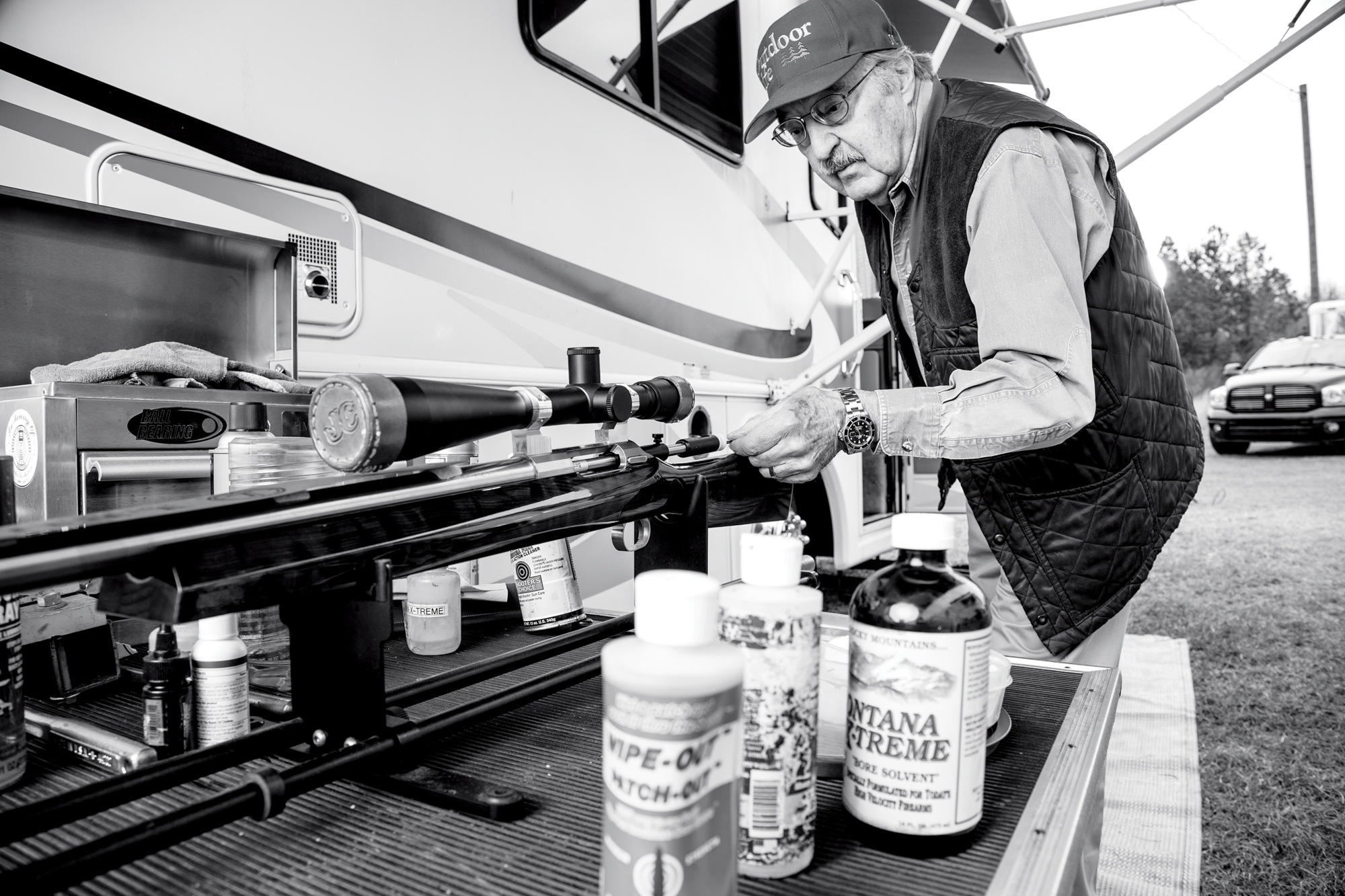
Somewhere during the firing of my third group of the day, I began to realize that there was something exceptional about the way my rifle was performing. Could this new barrel be what bench shooters call a “hummer,” one that delivers bullets that seem abnormally resistant to crosswinds? I’d had perhaps three dozen really fine barrels over the years, but only one that I would call a hummer. It won me trophies and championships but finally faded with time and wear. Could this barrel be another such treasure? One thing that seemed sure was that changes in wind strength that should have been moving my bullet’s point of impact on the target by a quarter inch or more were having only half that effect, meaning I could refine adjustments in my points of aim. That third group measured .164 inch, keeping me in first place but still nowhere near an attention-getting Zero (in bench lingo, any group measurement that begins with .0 is simply called a Zero) that signals a record in the making.
Somewhere during the firing of my third group of the day, I began to realize that there was something exceptional about the way my rifle was performing.
It was starting to look like a pretty good day, but it takes five groups to make a winning aggregate, and almost inevitably the fourth or fifth groups are the graveyard of dreams. The fourth group measured an even more satisfying .128 inch and my top ranking held, but setting a new record didn’t even enter my mind as I went to my camper to clean the rifle’s barrel and reload the fired cases. But I was keenly aware that I was on the threshold of breaking my Shamrock jinx and winning an event. The wind velocity was steadily increasing as the morning progressed toward midday, becoming more erratic as it swept over the berm, causing the flags to flutter and point in crazy directions. Five more shots to go, and any one of those could mean disaster.
Rapid Fire
My shooting technique is what’s known in the game as “running,” meaning I run off all five shots as fast as I can load, aim, and touch the trigger. This is the reason the BAT actions on my rifles have separate loading and ejection ports. With a block of ammo just a couple of inches from the left-side loading port, I can flip a loaded round into the open action, even as the fired case is ejecting from the right-side port. Normally I get off five shots in about 25 seconds using this technique. The purpose of running is to get all your shots on target before Mother Nature changes her fickle mind about which way she wants the wind to blow. Needless to say, running is fraught with risk because a sudden, unnoticed change in wind direction or force can mean disaster.
After firing two fouling shots on the sighting target and taking a final look at the row of flags, I dead-centered the crosshairs on the record target and began shooting. Like a poker player trying to exert the force of his will to draw a needed card, I tried to will that last shot into the group. It must have had some effect, because when I ejected the fired case and looked through the scope, all I saw was one ragged little hole that later measured .115 inch.

A Record Set
I knew I’d won the match, but the thought that I’d broken the 100-yard Light Varmint aggregate world record, which had stood at .1500 inches since 1994, still hadn’t entered my head. That realization came later, when I got to the scoreboard and found a group of shooters crowded around and shaking their heads in disbelief. “Hey, Carmichel,” one of them yelled. “You just shot a .1322 and beat the old record by a bunch.” Could it be true?
Those five targets were just the first of a string of luck, the next being that a couple of officials from the National Bench Rest Shooting Association, Harley Baker and Wayne Campbell, were on hand and knew the steps for guiding a pending record to certification: one being to confiscate the targets and target backers. (The moving backers provide proof that the correct number of shots have been fired.) Each was witnessed and signed by the referees, then sealed to prevent tampering. My rifle also had to be weighed and certified, and it passed this hurdle with a couple of ounces to spare. The next step would be submission to the records committee, a process that can take weeks as the targets are independently measured by each committee member. Again I was in luck, because another NBRSA official, Gene Bukys, chairman of the committee, was also there as a competitor and had observed these all-important first steps, thus virtually eliminating the possibility of a challenge.
And, so, to my surprise, my world record became official, and the rumors began.
Benchrest Explained
The Idea: As the name implies, benchrest rifles are supported on a solid rest. The underlying theory is that by minimizing the human element, the competition is strictly between rifles, and the most accurate rifles and ammunition will naturally win.
Specs: In the Light Varmint category, we shoot at 100 and 200 yards over the two days of the match.
Scores: Scores are not determined by hitting a bull’s-eye, but rather by trying to get all the bullets through a single hole. The score is the distance between the centers of the two widest shots. The smaller the group, the better.
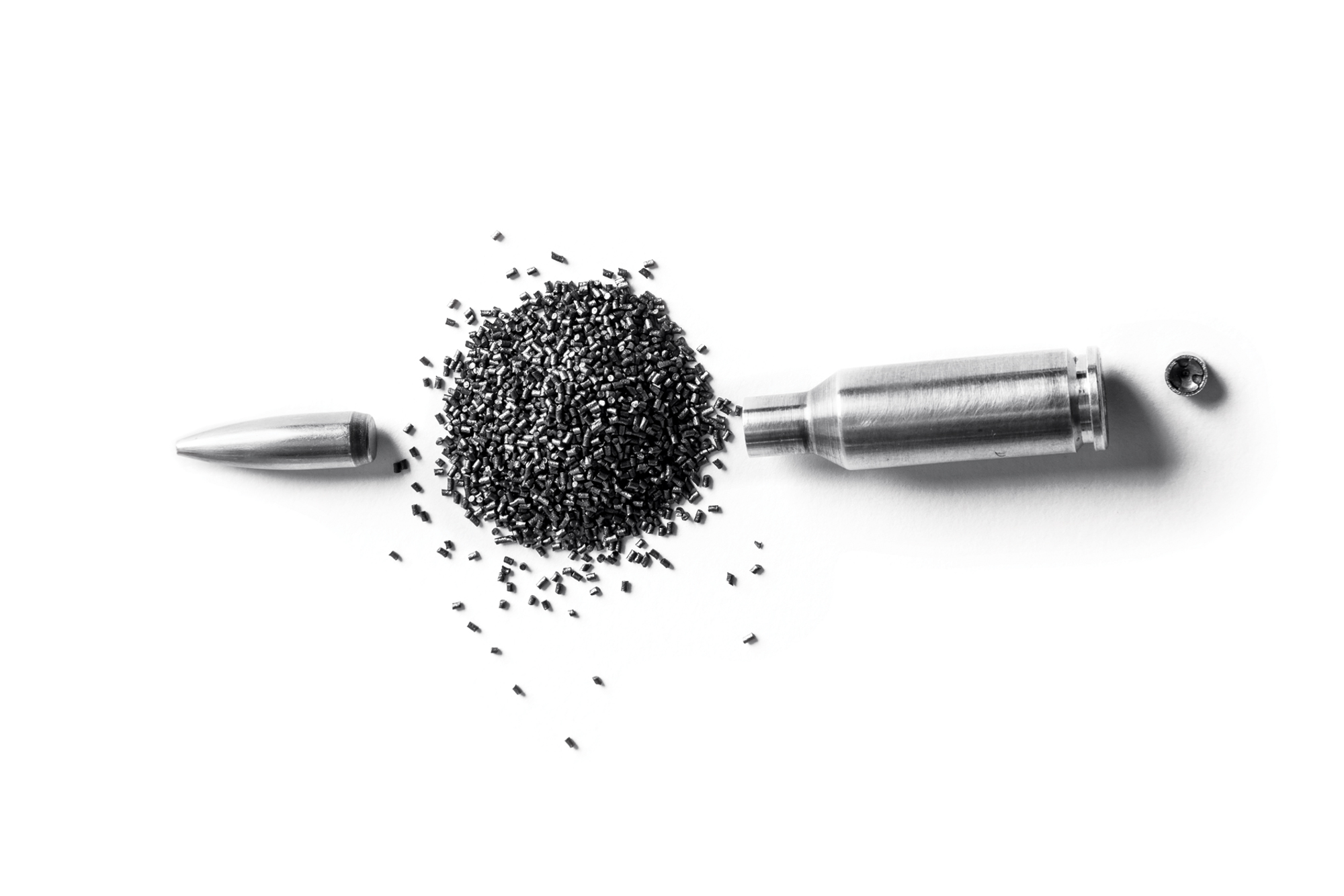
Anatomy of a Winning Cartridge
The 6mm PPX, developed by Lous Palmisano and Ferris Pindell in 1975 is the most successful cartridge in benchrest history. Here’s the record-setting load.
Bullet: 68-grain Hottenstein
Powder: 29.5 grains of Vihtavouri 133
Brass: .220 Russian brass from Lapua, modified to 6mm PPC
Primer: Federal 205 Gold Medal primer
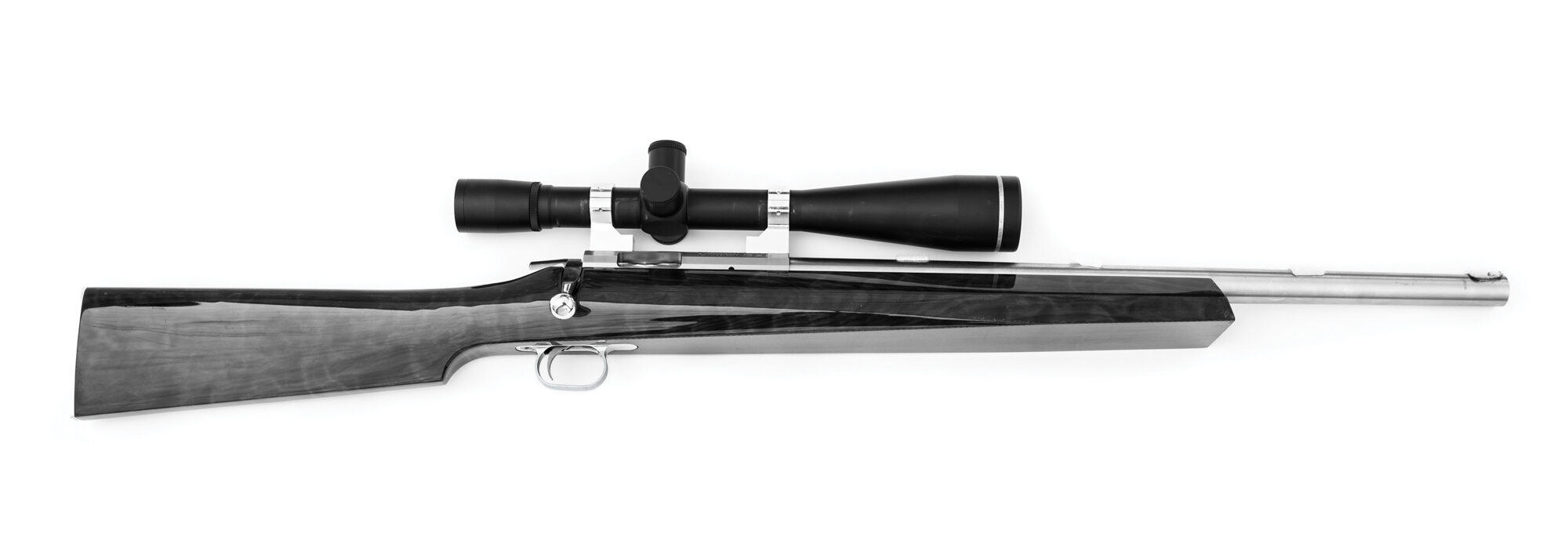
The Rifle
My record-setting rifle is in the Light Varmint class, in which the rifle can weigh no more than 10 ½ pounds, including scope and mounts. This is not all that much heavier than a typical big-game hunting rifle and actually a good bit lighter than many of today’s commercial varmint and “tactical” rigs.
Barrel: The Kreiger stainless-steel barrel was chambered and fit by accuracy guru Dwight Scott.
Scope: Leupold 45X Competition scope
Chamber: 6mm PPC
Action: It is a single-shot BAT bolt-action with a right-handed bolt, left-side feed, and right-side eject.
Stock: Made from a pretty piece of Western cedar, the stock was built by Tennessean Terry Leonard, who knows how to work miracles with a slab of wood. He layered the stock with thin sheets of woven carbon fiber. These almost invisible layers give the stock strength, while the cedar gives it lightness. The stock on my rifle weighs a mere pound and a half.
This story, “I Finally Shot a Good Group,” originally ran in the June/July 2013 issue of Outdoor Life. Read more OL+ stories.
